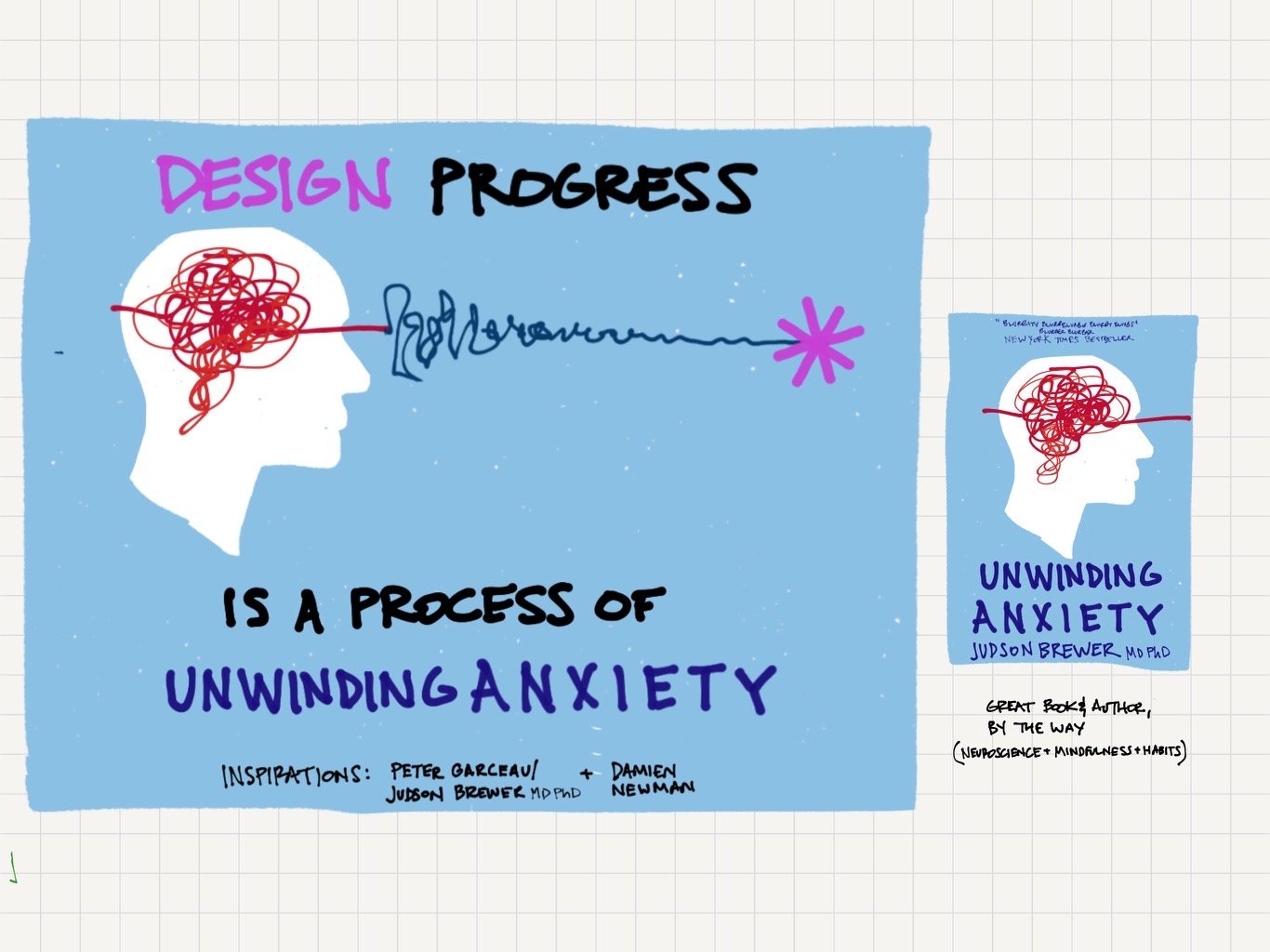Anxiety Reduction by Design
Design is a process of unwinding anxiety.
When I was a product design student, I was given a book by my designer-engineer brother: Design Thinking, by architect Peter Rowe. Early in the book, Rowe lays out a taxonomy of problems for designers, including “wicked problems”. I laughed when I first read it. Then I spent the next 20 plus years trying to get that laugh back, working on big hairy wicked problems.
Problem-solving is often reducing dissatisfaction for end users. Some of that dissatisfaction is due to uncertainty, and its shadow, anxiety. How does this thing/site/process/UI work? Will I be able to do what I intend? How upset will I be when I fail?
A successful design preempts or mitigates, these anxieties for its users. A designer who recognizes and empathizes with a user’s anxieties can design to address them. Designers thus have to handle anxiety three ways: the user’s; the client’s (Is it done yet?); and their own.
To engage these problems, it helps to be comfortable with ambiguity. A characteristic of a ‘wicked problem’ is that there is no single “right answer.” A little discomfort is useful: it piques curiosity, leading to exploration, generation, iteration until something becomes as close to “right” as you can get it. A design process involves expansive thinking that explores and generates options, but then prunes options down as one commits to a solution and refines it.
We designers feel a momentary sense of relief of ‘finishing’ a design project before other neuroses kick in… After all, a design is never truly finished; and we will always question what we could have done differently, if it’s working the best that it can, and what we can do next to improve it. We have a creative itch, sometimes a perfectionistic drive, and some anxiety is part of the package. We can tolerate failure and ambiguity, but we’re not always happy about it.
Too much discomfort with ambiguity, and one can be distracted by anxiety, not anticipation. Even those with many design cycles behind them are not immune to anxiety. We can use this feeling to communicate with stakeholders about what we know and don’t know, and how we’re addressing it, knowing that as we make choices and converge on our solution, we’ll feel better.
